Browse using the new Vinous website now. Launch →
Printed by, and for the sole use of . All rights reserved © 2015 Vinous Media
The DBs: Bordeaux 2016 In Bottle
BY NEAL MARTIN | JANUARY 24, 2019
Left Bank: Margaux | Pauillac | Pessac-Léognan | Saint-Estèphe | Saint-Julien
Right Bank: Pomerol | Saint-Émilion | Sauternes
Introduction
June 17, 2016. Noon. I’m driving past the cypress trees that line the driveway of Trotanoy when somebody flicks a switch and the pitter-patter of raindrops turns into a downpour straight out of the Old Testament. I hit the brakes and pull over, since I can no longer see out of the windscreen. I wouldn’t wish to go careering into a row of sacred Cabernet Franc. It has rained constantly for six months, some 700mm thus far in 2016, and as a consequence the ground is saturated down to the Earth’s core. It takes moments for choked drains to belch turbid brown rainwater back to the surface, upon which it streams across the road into already flooded sectors of vineyard. I manage to take a short video on my smartphone in order to record the possible end of Pomerol; it can be a coda for the second edition. Further on, where the lane descends towards the lower reaches, there is already at least 18 inches of water, and yonder, a winemaker waves for me to reverse back. Waiting for the deluge to abate, I gaze at the vines, some thigh-deep in muddy water, and reflect upon the weather these last few months. No doubt about it: the 2016 vintage is going to be a write-off. Get the newspaper presses rolling with the headlines now…
How was I to know that three days later, the sun would come out and never really go back in?
Looking back over 20-plus en primeurs, some stick in the memory more than others. Great vintages – and by that I mean truly great and not the Bordeaux definition that translates as “forthcoming” – are lodged at the forefront of my mind. I remember the heady aromas of the Right Bank 1998s from barrel, the density of the 2000s that stained my teeth purple and the pedigree of the maturing 2005s. I will not forget the sumptuous 2009s that made that primeur so enjoyable, or the classicism and girder-like tannins of the 2010s that made for an arduous but rewarding tasting from barrel.
Likewise, I shall always remember my first impression of the 2016s: their elegance, purity and poise, the intensity of fruit, the articulation of respective terroirs, and that oft-forgotten virtue, how bloomin’ delicious they tasted. My overriding feeling was that Bordeaux had been heading towards the 2016 vintage since the late 1990s. It was a year when everything just came together at the right moments. And let’s not forget, it was a year when Bordeaux enjoyed more than its fair share of luck compared to other French wine regions, such as Burgundy and the Loire.
In recent months I have tasted some 2016s just after bottling during château visits, though in my experience it is wise to wait a few weeks so that the wines can brush themselves down after being evicted from cosy barrel into glass prison. These fleeting encounters augured a stunning vintage, but confirmation would only come once I began tasting en masse in December. There was but one question to ask:
Does the 2016 Bordeaux vintage deliver on its promise?
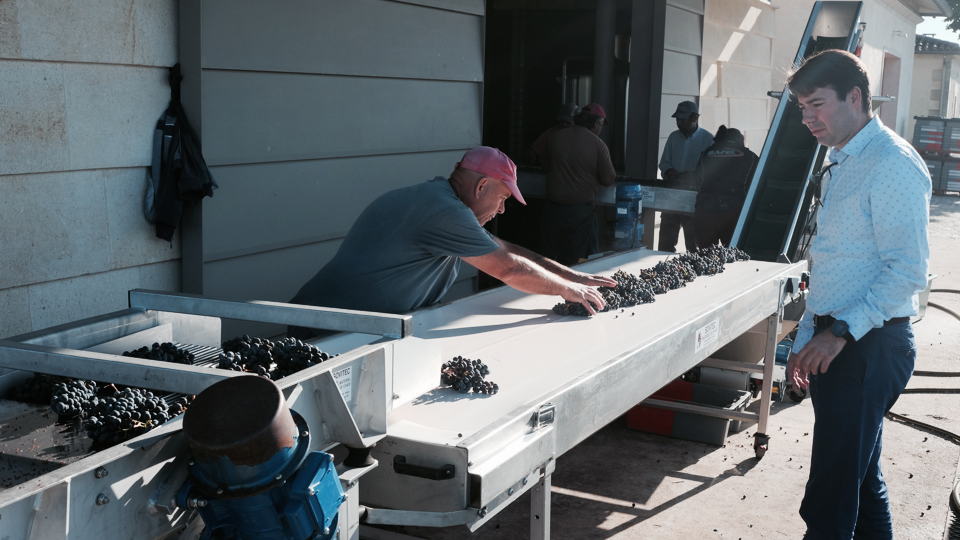
Ronan Laborde checking the fruit as it comes in from the vineyard at Clinet.
Growing Season
The 2016 growing season was essentially a season of two halves, the first wet and the second dry. The rain was unrelenting for the first six months of the year, and despite regular bud-burst, by early June, many winemakers feared a rerun of 2013. The first stroke of luck came when flowering coincided with a brief window of sunny, dry weather between June 3 and 11, so that at least a decent-sized crop was in the offing. On June 20, the sun came out, though it was not until mid-July that temperatures began rising towards 30°C. From June 20 until September 13, there was just 25mm of rain (in Saint-Estèphe, a mere 5.5mm). Crucially, there were no heat spikes, and only four days when the mercury climbed above 30°C during August, but there were 26% more sunlight hours. Coupled with cool nights, the diurnal temperature variation locked in acidity and accreted anthocyanin levels that ended higher than 2009 or 2015. It was the perfect environment to ripen berries.
Picking of the whites began on September 1 at Haut-Brion. A few days later, there was some consternation that the lack of rain was inducing hydric stress, especially with respect to young vines on free-draining soils, whose leaves began to curl. Then more good luck: 20mm to 50mm of rain fell on September 13 and restarted the vines’ engines so that they could cruise towards phenolic ripeness. Eric Kohler, winemaker for Lafite-Rothschild, explained how the dryness and stress built gradually over the summer, from the beginning of véraison. “We were worried about the thick skins and potential hardness,” he told me. “The rains finished the maturation and that was the key. Without that rain, there would not be such rich and elegant wines.” There was one further spell of rain on September 30 that threatened localised rot, then the main picking began in October, the Merlot during the first week and the Cabernet Sauvignon from the 15th or 16th.
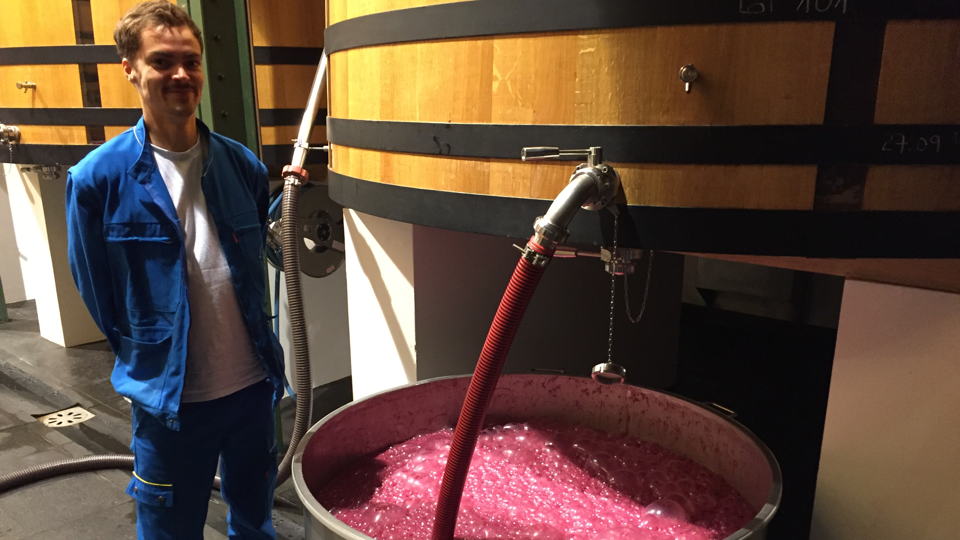
This is the rather nice Mouton-Rothschild being born back in September 2016.
I witnessed the harvest firsthand and vividly recall the infectious high spirits of the pickers blessed with healthy bunches and just a bit of grillure to look out for on the Right Bank. Musts were lucid in colour with average alcohol levels, mostly between 13° and 14.5°. Whilst regions like Champagne and Burgundy suffered depleted yields due to frost damage earlier in the season, in Bordeaux, volume was 7% up on the previous vintage.
How the Tastings Were Done
I had already tasted many 2016s that were published on Vinous in October, centred around the Cru Bourgeois and what you might generally call “value” Bordeaux. My first real run through the wines took place at the Union de Grand Cru tasting in London in mid-October, wedged between sessions in Burgundy tasting from barrel. I use this just to get a picture, as nearly all these wines are subsequently re-tasted. I made one short visit in November to taste the Graves Cru Classés with the syndicate, which explains why there are quite a few Deuxième Vins from this appellation not usually tasted, plus one tasting on the Right Bank. In early December I embarked upon just under two weeks of visits, ringing the doorbell at many properties, plus organised tastings with négociants and consultants, so that many wines were tasted multiple times. Unfortunately, this report does not include Sauternes as I had to postpone a tasting scheduled for mid-January due to unforeseen circumstances. However, the 2016s will form part of a deep examination of Sauternes in the near future. Despite this regrettable omission, in total the two reports amount to just shy of 900 reviews in bottle, more than I have ever achieved before.
What’s the saying? You can’t have too much of a good thing.
The Wines
Let’s cut to the chase: 2016 is a fantastic, sublime and at times entrancing vintage. For once, the frothing hype that presaged en primeur was justified. The 2016 vintage already feels haloed. The promise that was so palpable in barrel remains, and many of these wines are destined to give immense pleasure, not only at the top of the hierarchy but on the lower rungs too – always the litmus test of a truly great growing season.
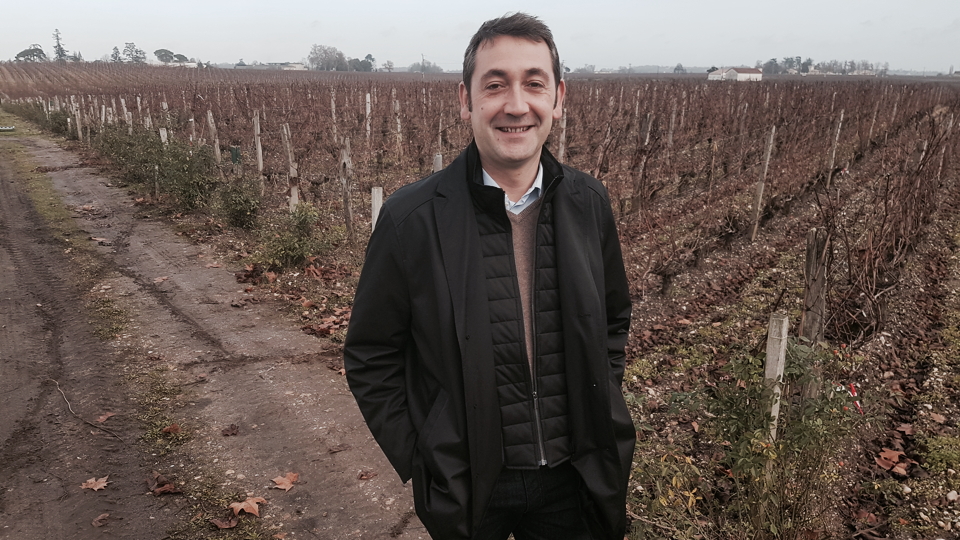
Fréderic Faye oversaw a sensational Figeac in 2016 that will rank alongside legends of the 1940s and 1950s.
That said, I am a critic. I do not write to give Bordeaux positive PR; they have enough of that already. Just because your bottle of claret reads “2016” on the label, that does not imply a superlative wine or a transcendental experience. I have no hesitation in pointing out those wines that did not match expectations, either by virtue of reputation or vis-à-vis my prediction from barrel. Once the primeur circus has left town, decisions made during the subsequent months’ élevage are not necessarily the right ones. We all make mistakes. Occasionally, I found the level of new oak and/or toasting not quite in sync with the fruit concentration, or the racking not quite as assiduous as it could have been, thus denying the success that was within reach. It happens. Conversely, there are wines that perhaps fluffed their lines during en primeur and did not show particularly well, but subsequently ameliorated and ended up better than predicted. In such cases, I am happy to upgrade my score, and I state in the tasting note where this occurred. Fortunately, most of the bottled 2016s do correlate to my banded barrel score, but I am never hidebound by my predictions.
When tasting a new vintage in bottle, I take a step back so that my purview is not restricted to the season in question, but considers the broader context of recent growing seasons, in this case 2014 and specifically 2015. Why? Well, the Bordeaux machine tends to promulgate the vintage due for release and downplay the previous one, irrespective of how much it was lauded 12 months earlier. “I know we claimed that last year’s wines were amazing,” you hear. “But this year’s are even better!” Some winemakers suddenly became a little dismissive of their 2015s once the 2016s arrived in order to impress upon anyone within earshot the latter’s superiority. However, re-examining my impressions of 2015 compared to 2016, I see two great Bordeaux vintages whose strengths are located in slightly different areas. Let’s summarise them appellation by appellation.
Saint Estèphe is stronger in 2016 than 2015, though do not overlook the tremendous 2014s.
Pauillac is probably equal in both vintages.
Saint-Julien seems slightly stronger in 2016 than 2015.
Margaux? I suspect that the 2015s will marginally shade the 2016s.
Pessac-Léognan, like Pauillac, produced a raft of 2016s equal to the previous year. The dry whites were hindered by the dry weather and just lack a bit of excitement.
Saint-Émilion and Pomerol’s 2015s are ahead of the 2016s by a nose.
Fronsac performed extremely well in 2016; Lalande de Pomerol, curiously less so.
A broad generalisation might suggest that 2015 favours the Right Bank and 2016 the Left Bank. As I pointed out after primeur, the Cabernet Franc is a little less prevalent in 2016 than the previous vintage and occasionally I missed its contribution. I want to stress that we are talking small margins here. A bevy of astonishing wines is distributed across BOTH vintages. The real test will come when both reach 10 years of age and we can compare how they have matured in bottle. For now, at this early stage, these are my sentiments. (Readers should also note that I am due to re-taste the 2015s blind in the coming weeks.)
Naturally, consumers and merchants zone in on those 100-pointers, since nothing attracts eyeballs or sells wine like perfection, whether you believe in that notion or not. I might be parsimonious in dishing out perfect scores, but when truly convinced that a wine ranks amongst the glitterati of the tiny number garlanded with perfect scores throughout my career, I do so. Bestowing a supposedly incontrovertible 100 points is more difficult than 98-100 points during primeur, when you have more leeway. Often that banded score is misinterpreted as 100 points, but it only signifies candidates for that three-figure score. Hypothetically, all of them could achieve it… or none of them. The reality is that some achieve the ultimate accolade, and then, of course, they have to maintain that level throughout their evolution, preferably when consumers drink them rather than when critics rate them. That is why I constantly ask myself: If served this wine blind against its peers in the future, would I be moved to award a perfect score? A lot depends on the individual’s criteria, and readers should refer to the “plateau and peak” analogy in my “Bordeaux In Excelsis” article.
You have probably perused the scores already, but personally I would have been disappointed if 2016 had not sprung up wines that genuinely merit that magic score. To reiterate, there must be a combination of quality that goes beyond sensory attributes into something quasi-religious and galvanised by unshakeable belief. Just a mote of hesitation prompts me to score a wine 98 or 99 instead of 100 points. But the 2016 Latour, Mouton-Rothschild, Cos d’Estournel, Figeac and Vieux-Château-Certan form a quintet that I cannot imagine being improved in any way, shape or form, which is why they deserve perfect scores. Yet this entire argument is ridiculous. How can you not marvel at the brilliance of Haut-Brion, La Mission Haut-Brion, Léoville Las Cases, Pétrus or Cheval Blanc? These are astonishing wines, and there are many more besides. There are triumphs, wines that are riveting to taste. Who knows whether someday down the line, some might reveal facets thus far hidden by youth that elevate them higher? Wine is a mercurial living being, after all. That’s why I taste again and again, monitoring progress from child to adult.
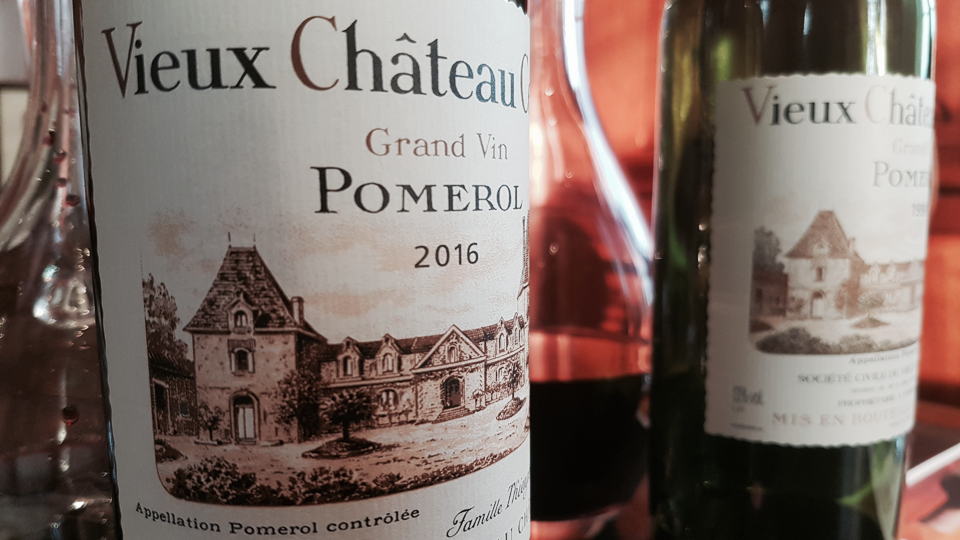
It goes without saying that 2016 boasts numerous wines pulled from top drawers, and readers will find many notes where I remark that the 2016 constitutes the best I have ever tasted at the property since my first primeur, the rather middling 1997 vintage (you have to start somewhere). One observation I made during the tastings was how the tannins are now finer and the fruit purer than ever before. During verticals, it is fascinating to compare 2009/2010 with 2015/2016. All are great Bordeaux vintages, yet the former exert more weight and grip and perhaps a more forceful style, whereas the latter convey greater tension and elegance. If I may recycle (no pun intended) the analogy I offered with respect to the 2017 Burgundies, it is like upgrading a bicycle frame to one lighter and yet equally strong. Bordeaux tannins are now made of carbon fibre instead of steel. This has arisen through more precision in the vineyard, more fruit selection at winery receptions, but mostly through gentler pressing and then more grading/selection of pressed wine, so that only the best lots enter the final blend. I have heard some commentators comparing those two vintage pairs in terms of 2009 and 2015 emphasising more fruit, 2010 and 2016 more structure. There is some validity to this, though the 2016s are stylistically very different from 2010 because of that difference in tannin profile, the 2010s far more masculine, denser and generally higher in alcohol. Another facet is the aromatics of the 2016s. My God, there are wines so perfumed that you could just sit and nose the glass all day, enjoying the often quite floral style, as if a little bit of Margaux was distributed around the appellations. The delineation and precision are sometimes remarkable.
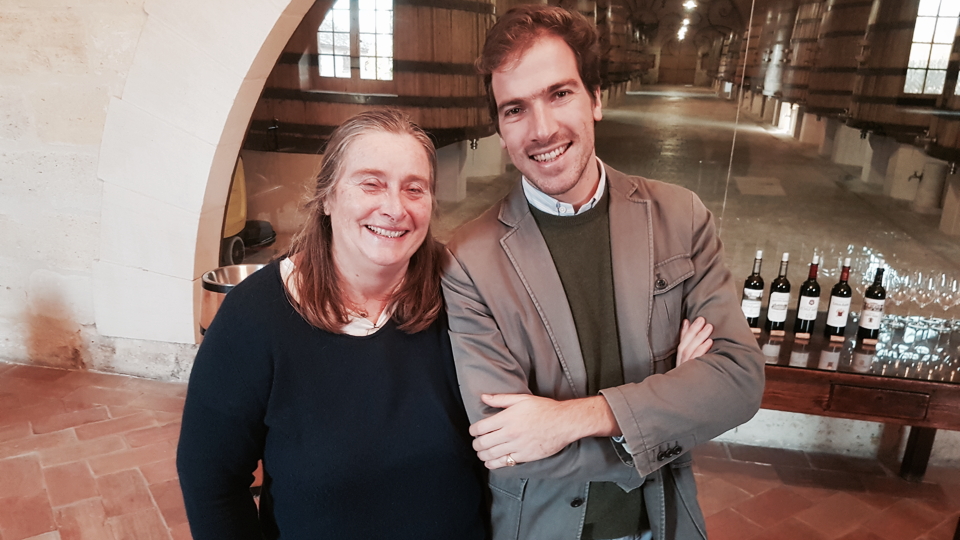
Lilian Barton-Sartorius with Damien Barton at Château Léoville-Barton, which produced a superb 2016.
How will the 2016s age? Well, what attributes enable a wine to evolve long-term and develop secondary aromas and flavours that add another dimension? This is a complex and mysterious subject. I do not think one particular factor determines a wine’s ability to repay cellaring, but rather a combination that none of us fully understand and that even varies from one bottle to another. We’ve all been there before. Certainly, balance, fruit concentration, structure and precision bode well for a return on patience, though the aforementioned finer tannins have unquestionably resulted in more approachable wines, as evidenced by the still impenetrable 2010s, and even 2005s, 2000s and 1986s. Many of these 2016s will drink well after five or six years, though personally I would be broaching my 2012s and 2014s before delving into 2015s and 2016s (I assume readers didn’t go long on 2013). It’s your wine. Ignore my advice and drink it when you want. It’s a question of whether your palate has a predilection towards primary fruit or relishes secondary characteristics, whether the thrill of imbibing something historical appeals or holds no charm. In this sense, the 2016s should appease both camps (and indeed, I feel the same about the 2015s).
(Yet More) Value Bordeaux
I offered a wealth of 2016s that I believe will give consumers great value in my article last year, but here are some more picks from this latest tranche, skewed slightly towards the Right Bank, simply because the overall number of wines tasted leans to that side.
2016 Ambe Tour Pourret (Saint-Émilion) – bargain Right Bank courtesy of the Lannoye family, who own five hectares of vine, certified organic in 2015.
2016 Bréhat – an excellent Castillon Côtes de Bordeaux under the guidance of consultant Thomas Duclos.
2016 Capbern (Saint-Estèphe) – formerly known as Capbern-Gasqueton, this once languished in the shadow of Calon-Ségur but has really come into its own in recent years, a testament to the winemaking skills of François Millet.
2016 La Chenade (Lalande de Pomerol) – there simply had to be one from Denis Durantou in this list. I chose his Lalande de Pomerol, one of the standouts in a slightly disappointing set of wines from the appellation.
2016 Haut-Simard (Saint-Émilion) – part of the Vauthier family’s portfolio. If you could not obtain any Ausone this year, head for this, one of the best vintages I have tasted.
2016 Lynch Moussas (Pauillac) – this property, owned by the Castèja family or négociant Borie-Manoux, has improved greatly in recent years, and the 2016 has much to offer.
2016 Reignac (Bordeaux Supérieur) – from a significant 135-hectare property owned by the Vatelor family, who make both a white and red from the estate, this will surely represent great value.
2016 Renon (Côtes de Bordeaux) – this was acquired by Chinese entrepreneur James Zhou in 2015. I appreciate the classic style of the wine.
2016 Château de Ricaud (Cadillac Côtes de Bordeaux) – an excellent Cadillac, part of Dourthe’s portfolio, which has benefited from a great deal of investment in recent years.
2016 Saint-Pierre (Saint-Julien) – probably underrated by many, this is an outstanding Saint-Julien that is two steps ahead of its sibling Gloria this year. It still represents great value.
2016 Les Trois Croix (Fronsac) – sadly, Patrick Léon, former winemaker at Mouton-Rothschild, passed away late last year, but this wonderful Fronsac is just one of his legacies.
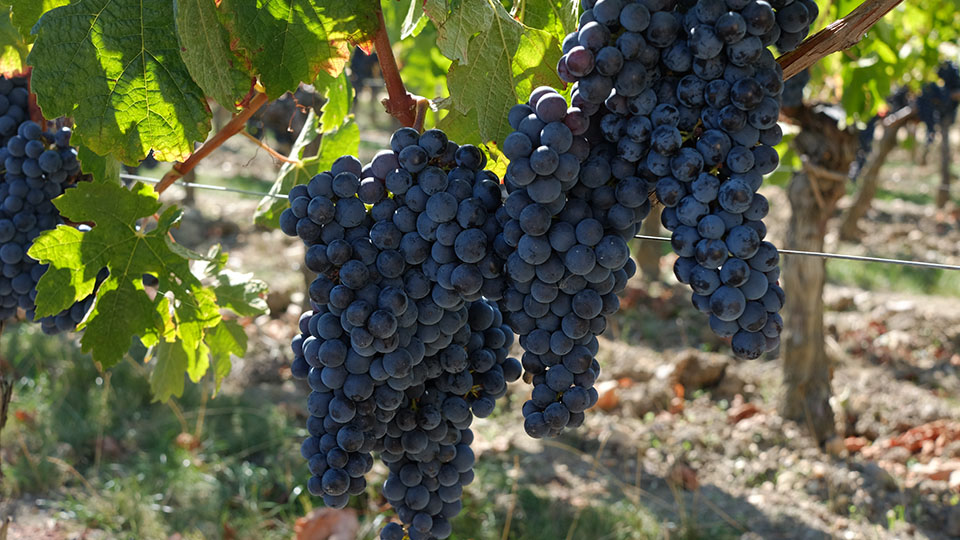
Grapes at Pétrus
Final Thoughts
The 2016 vintage in Bordeaux will surely be seen as a high point of this decade, though the 2015s are very close in overall quality. Prices have remained bullish since en primeur, principally because there was a lot of momentum behind the campaign from the outset. The 2016 vintage was one that consumers received with open arms, which is not the case every year, irrespective of touted quality. In some ways it represents the opening of a new chapter in Bordeaux, one where the occasional excesses of the 1990s and 2000s have been laid to rest, rendering the wines much more drinkable than just a decade ago. The mantra of “elegance” and “refinement” is passim, and those attributes can go hand-in-hand with the fruit intensity, structure and density of great Bordeaux. High alcohol levels of 16° and over now seem anachronistic (though let’s wait and see what the 2018s will bring; the weather might push levels up if winemakers seek phenolic ripeness, denying them the less alcoholic style they wish to make). Certainly, the growing season in 2016 permitted winemakers to create exactly the kind of wines they wanted, and these wines are benchmarks for years to come. To use an English phrase referred in the title of this report, the 2016 Bordeaux wines are the DBs – the dog’s bollocks.
You Might Also Enjoy
2016 Bordeaux…It’s All In The Bottle, Antonio Galloni, January 2019
Where Value Lies: First Look At 2016 Bordeaux, Neal Martin, October 2018
Bordeaux In Excelsis, Neal Martin, June 2018
The F-Word: Bordeaux 2017, Neal Martin, April 2018
Show all the wines (sorted by score)
- A.D. Francos
- Alcée
- Ambe Tour Pourret
- Angélus
- Angludet
- Ausone
- Badette
- Balestard La Tonnelle
- Barde-Haut
- Barrabaque
- Barrail Saint-André
- Batailley
- Beauregard
- Beau-Séjour Bécot
- Béchereau
- Bélair-Monange
- Bel-Air-Ouÿ
- Belgrave
- Bellevue Mondotte
- Bellevue (Saint-Émilion)
- Berliquet
- Bernon Bécot
- Beychevelle
- Bonalgue
- Bourgneuf
- Bouscaut
- Branaire-Ducru
- Brane-Cantenac
- Bréhat
- Busquet
- Cadet-Bon
- Calon Ségur
- Canon
- Canon La Gaffelière
- Canon Montségur
- Cantelys
- Cantemerle
- Cantenac Brown
- Cantin
- Capbern
- Cap de Faugères
- Cap du Moulin
- Carbonnieux
- Cartreau
- Certan de May
- Chasse-Spleen
- Château Beauséjour JDL
- Château Margaux
- Chauvin
- Cheval Blanc
- Citran
- Clarendelle Bordeaux
- Clarendelle Médoc
- Clarendelle Pessac-Léognan
- Clarendelle Saint-Émilion
- Clerc-Milon
- Clinet
- Clos 56
- Clos Badon
- Clos Candelayres
- Clos de Boüard
- Clos de l’Église
- Clos de l'Oratoire
- Clos de Sarpe
- Clos des Prince
- Clos Dubreuil
- Clos du Clocher
- Clos du Marquis
- Clos Fourtet
- Clos Junet
- Clos La Rose
- Clos Lunelles
- Clos Margalaine
- Clos Marsalette
- Clos René
- Clos Romanile
- Clos Saint-Martin
- Corbin
- Cos d'Estournel
- Cos Labory
- Côte de Baleau
- Côte Montpezat
- Coudert
- Coufran
- Couhins
- Couhins-Lurton
- Courlat
- Croix Cardinale
- Croix de Bertinat
- Croix de Labrie
- Croix des Rouzes
- Croizet-Bages
- Croque Michotte
- d'Aiguilhe
- Dalem
- d'Arce
- d'Armailhac
- Dassault
- Daugay
- Dauzac
- de Bel-Air (Lalande de Pomerol)
- de Cérons
- de Cruzeau
- de Fieuzal
- de Fonbel
- de France
- de Gachet
- de La Croix
- de la Huste
- de Lamarque
- de l'Anglais
- de Pez
- de Reignac
- de Ricaud
- de Rochemorin
- de Saint Nicolas
- des Laurets
- Desmirail
- Destieux
- de Valois
- de Viaud
- d'Issan
- Domaine de Chevalier
- Domaine de la Solitude
- Domaine de L'Aurage
- Domaine de L'Eglise
- Domaine des Cambes
- Domaine des Sabines
- du Bernat
- du Bousquet
- Ducluzeau
- Ducru-Beaucaillou
- du Gazin
- Duhart-Milon
- Durfort-Vivens
- du Tertre
- Enclos Tourmaline
- Faizeau
- Faugères
- Faurie de Souchard
- Ferrière
- Feytit-Clinet
- Figeac
- Flaunys
- Fleur Cardinale
- Fleur de Scène
- Fonbadet
- Fonplégade
- Fonroque
- Fontenil
- Fougas
- Fourcas-Borie
- Franc-Mayne
- Francs Magnus
- Garraud
- Gazin
- Gazin Rocquencourt
- Giscours
- Gloria
- Godeau
- Gombaude-Guillot
- Gracia
- Grand Barrail Lamarzelle Figeac
- Grand Corbin Manuel
- Grand Mayne
- Grand Ormeau
- Grand-Pontet
- Grand-Puy Ducasse
- Grand-Puy-Lacoste
- Grand Village (Lafleur)
- Grangey
- Gruaud Larose
- Guibeau
- Guibot
- Haut-Bages Libéral
- Haut-Bailly
- Haut-Batailley
- Haut-Bernat
- Haut-Brion
- Haut-Brisson
- Haut-Cadet
- Haut-Maillet
- Haut-Mongeat
- Haut-Rocher
- Haut-Sarpe
- Haut-Simard
- Haut-Veyrac
- Haut-Vigneau
- Hoclet
- Hosanna
- Jacques Blanc
- JCP Maltus
- JCP Maltus - Laforge
- JCP Maltus - Le Carré
- JCP Maltus - Le Dôme
- JCP Maltus - Les Astéries
- JCP Maltus - Pontet Labrie
- JCP Maltus - Teyssier
- JCP Maltus - Vieux Château Mazerat
- Joanin Bécot
- Jura Plaisance
- Kirwan
- La Bastienne
- Labégorce
- La Cabanne
- La Chandellière
- La Chénade
- La Claymore
- La Clémence
- La Clotte
- La Comédie
- La Conseillante
- La Courolle
- La Couspaude
- La Création
- La Croix de Gay
- La Croix du Casse
- La Dauphine
- La Dominique
- Lafaurie-Peyraguey
- Lafite-Rothschild
- Lafitte
- Lafleur
- La Fleur
- La Fleur d'Arthus
- La Fleur de Boüard
- La Fleur de Gay
- Lafleur-Gazin
- La Fleur-Pétrus
- Lafon-Rochet
- La Fontaine de Lucas
- Lafont Menaut
- La Fortune
- La Gaffelière
- La Garde
- Lagarosse
- La Grâce Dieu Les Menuts
- La Grande Clotte
- Lagrange (Pomerol)
- Lagrange (Saint-Julien)
- La Grave
- La Grave Figeac
- La Gravière
- Lajarre
- La Lagune
- Lalande-Borie
- La Louvière
- La Marzelle
- La Mission Haut-Brion
- La Mondotte
- Lanbersac
- L'Ancien
- Langoa-Barton
- Laniote Saint-Émilion
- La Papeterie
- La Patache
- La Picherie
- La Pointe
- La Prade
- Larcis Ducasse
- Larmande
- Laroque
- La Rose Perrière
- La Rousselle
- Lascombes
- La Serre
- Latour
- Latour à Pomerol
- La Tour du Pin Figeac
- La Tour Figeac
- Latour-Martillac
- La Vaisinerie
- La Vieille Cure
- La Violette
- La Voûte
- Le Bon Pasteur
- Le Boscq
- Le Caillou
- Le Castelet
- Le Clos du Beau-Père
- Le Crock
- Le Doyenné
- Le Gay
- L'Eglise-Clinet
- Le Moulin
- L’Enclos
- Léoville Barton
- Léoville Las Cases
- Léoville-Poyferré
- Le Pape
- Le Pin
- Les Carmes Haut-Brion
- Les Champs Libres (Lafleur)
- Les Charmes-Godard
- Les Cruzelles
- Les Grandes Murailles
- Les Gravières
- Les Hauts-Conseillants
- Lestage-Simon
- Les Trois Croix
- Le Thil
- L'Évangile
- Leydet Valentin
- L’Hêtre
- L'If
- Lilian Ladouys
- Lucas
- Lucia
- Lynch-Bages
- Lynch-Moussas
- Lynsolence
- Madran
- Malartic-Lagravière
- Malescot St. Exupéry
- Malromé
- Mancèdre
- Marojallia
- Marquis de Terme
- Maucaillou
- Mauvais Garçon (aka Bad Boy)
- Mauvesin Barton
- Mauvinon
- Mazeyres
- Milens
- Monbousquet
- Monbrison
- Monolithe
- Monregard La Croix
- Montlandrie
- Montlisse
- Montrose
- Montviel
- Moulin de Clotte
- Moulin du Cadet
- Moulin Haut-Laroque
- Moulin Saint-Georges
- Mouton-Rothschild
- Nénin
- Ogier de Gourges
- Olivier
- Ormes de Pez
- Palmer
- Panet
- Pape Clément
- Pauillac par Pascale Peyronie
- Pavie
- Pavie Decesse
- Pavie-Macquin
- Péby Faugères
- Pédesclaux
- Petit Faurie de Soutard
- Petit Val
- Petit-Village
- Petrus
- Peyfaures
- Pey La Tour
- Peyreau
- Phélan Ségur
- Pichon Baron
- Pichon-Longueville Comtesse de Lalande
- Pierhem
- Pierre 1er (formerly La Croix Figeac)
- Pilet
- Pindefleurs
- Plince
- Plincette
- Poesia
- Pom N'Roll
- Pontet-Canet
- Potensac
- Poujeaux
- Prieuré-Lichine
- Puy-Blanquet
- Puygueraud
- Quinault L'Enclos
- Quintus
- Rahoul
- Rauzan Gassies
- Rauzan-Ségla
- Réaut
- Reclos de La Couronne
- Reignac
- Renon
- Richelieu
- Rieussec
- Roc de Cambes
- Rocheyron
- Roquevieille
- Rouget
- Roullet
- Roylland
- Saintayme
- Saint-Pierre (Saint-Julien)
- Sansonnet
- Simard
- Siran
- Smith Haut Lafitte
- Soutard
- Soutard-Cadet
- Subilaux
- Talbot
- Tertre-Rôteboeuf
- Tessendey
- Tour Bayard
- Tour Maillet (Lagardère)
- Tour Saint Christophe
- Tronquoy-Lalande
- Troplong Mondot
- Trotanoy
- Trotte Vieille
- Valandraud
- Veyry
- Vieux Château Certan
- Vieux Château des Rochers
- Vieux Chevrol
- Vieux Maillet
- Villemaurine
- Virginie Thunevin
- Yon-Figeac
